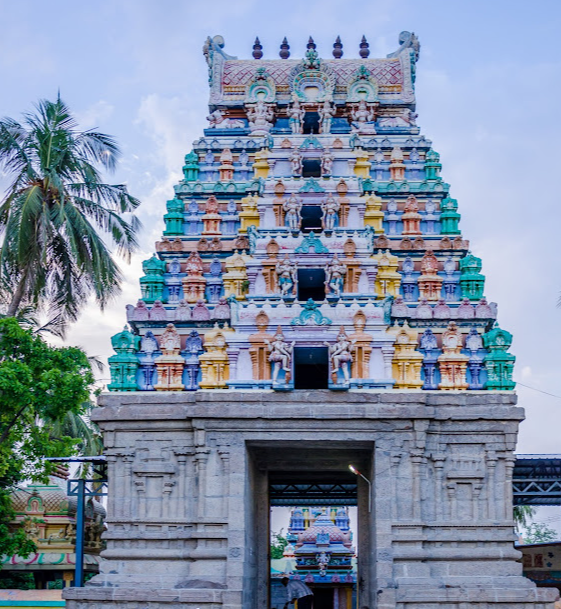Origin/History :-
The Thiruvadisoolam temple, located near Chengalpattu, has a rich historical significance as recorded in various inscriptions. It was originally known as Jayangonda Chozhamandalathu Kalathur Kottathu Valla Nattu Thiruvidaichuram during the 6th to 7th century. Lord Shiva at this temple is referred to as Thiruvidaichuram Udayar or Thiruvidaichuramudaya Nayanar, and the goddess is called Imayakodiammai.
The temple was constructed during the reign of Paramesuvaraman-I, and numerous inscriptions have been recorded at the temple, with a total of 15 inscriptions found here. These inscriptions date from the periods of several Chola and Vijayanagara kings, including:
- Kulothunga Chozha-I
- Vikrama Chozha-I (1128 AD)
- Rajanaraya Sambuavaran-I (1340 AD)
- Vijayakanda Gopalan
- Vijayanagara Kings Viruppanna & Bukkan-II
- Achutha Rayar
The inscriptions primarily record gifts of lands, the establishment of Impon Urchavar (a festival for Ambal), and the lighting of perpetual lamps. There is also a manuscript detailing the contributions of Kulothunga Chozha. Specific inscriptions include:
- AR 347 of 1906: Regarding the lighting of lamps for the goddess's sannidhi.
- AR 336 of 1908: Records the endowment for lighting a perpetual lamp and providing Naivedyam (offerings) to Lord Shiva.
- AR 346 of 1908: Mentions the construction of the sanctum sanctorum for the goddess.
Additionally, a 13th-century inscription notes the contribution of Vanavan Mahadevi Chathurvedimangalathu Thiruchuramudaiya Nayanar, and another inscription from the same period records an endowment for perpetual lamps by Sundarapandiyan, with a donation of 60 cows.
During the reign of Kulothunga Chozha-III, another inscription in his 33rd year mentions a sandhi lamp endowment. Another inscription from the 13th century on the north wall records the donation of 32 cows for a perpetual lamp.
Historically, the area surrounding the temple was once fortified, and it was ruled by regional kings Kathavarayan and Sethurayan. A palm leaf manuscript detailing these contributions is preserved at the Government Oriental Manuscript Library in Anna.
This temple thus has a deep connection to the Chola dynasty and the religious and cultural life of the region, with several royal contributions documented in the inscriptions.
Puranic Significance :-
